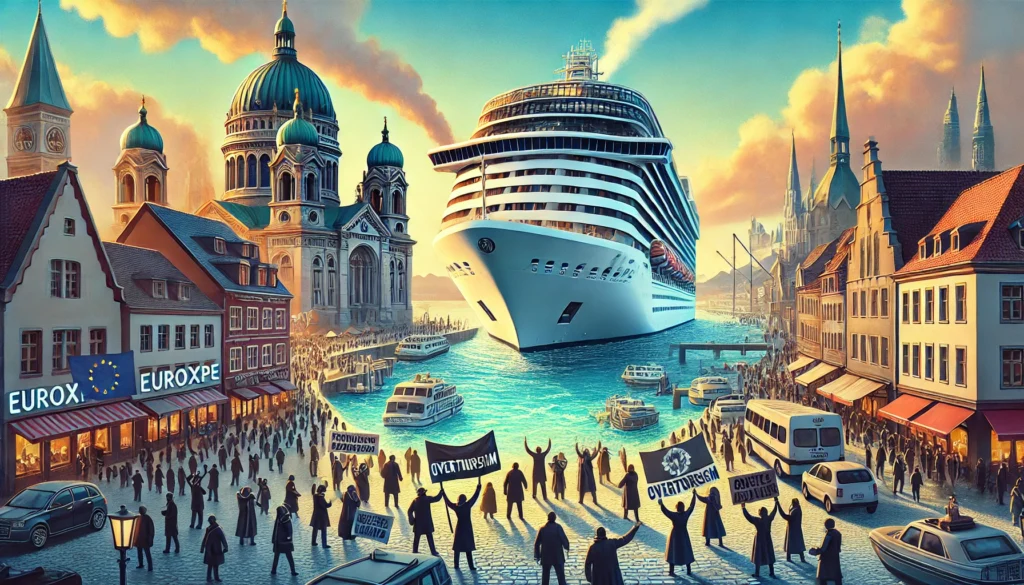The European head of the world’s largest cruise trade body has warned that its members may need to avoid some of the world’s most famous destinations to protect passengers amid a backlash against overtourism.
Several European cities have expressed their frustrations over rising tourist numbers and its impact on the price of everything from food to accommodation and the local ecosystem. Tourism’s environmental footprint is a complaint usually aimed at giant, carbon-emitting cruise ships.
In Barcelona, a popular setting-off point for cruise liners, locals have taken to squirting tourists with water pistols. Protestors in the Spanish Canary Islands started a hunger strike in April to protest overcrowding.
Last October, cruise passengers were greeted by protesters dressed as polar bears and sea lions as they disembarked at the French port of Brittany, highlighting the industry’s pollution issues.
A study from the campaign group Transport & Environment found Europe’s luxury cruise ships emitted as much toxic sulphur as 1 billion cars.
As protests have become increasingly hostile, the Cruise Lines International Association (CLIA) has suggested that it may have to divert ships to protect passengers from violence. “There will be some consideration of adapting the itineraries if for some reason we feel that all passengers will not be well-treated,” Marie-Caroline Laurent, European director of the CLIA, told Reuters.
Laurent didn’t specify which cities might be removed from itineraries, but it’s easy to speculate after a wave of protests across the continent in recent months. The mayor of Barcelona, Europe’s most popular port for cruise ships, said the city couldn’t take more passengers than the 3.5 million it accepted in 2023.
The CLIA defended its presence in Barcelona, stating that only 4% of the city’s visitors were cruise passengers.
Venice, which banned cruise ships from the centre in 2021, introduced a so-called “tourist tax” to deter or make extra money from day-trippers to the city this summer, months after moving to limit the size of groups that could congregate in the city. Amsterdam, meanwhile, plans to nearly halve the number of cruises that can stop in its port every year by 2026 and ban them altogether by 2035.
In Greece, locals have taken to using drones to enforce new rules on sun loungers in a bid to stop overcrowding on the country’s beaches.
Despite concerns about a rising lack of hospitality, the global cruise industry is set to carry 10.7% more passengers in 2028 than in 2023, when 31.7 million tourists boarded the liners. The CLIA remains committed to addressing environmental issues and working with cities to mitigate the impact of tourism.
The cruise industry is at a crossroads, balancing the growth in passenger numbers with the need to address the concerns of local communities and environmental activists. As the debate over overtourism continues, the future of cruise travel in Europe’s most beloved destinations hangs in the balance.
To address these challenges, the cruise industry must prioritize sustainability and community engagement. This includes investing in greener technologies, reducing emissions, and ensuring that tourism benefits local economies without overwhelming them. By taking proactive steps, the industry can help preserve the beauty and integrity of Europe’s iconic destinations for future generations.


